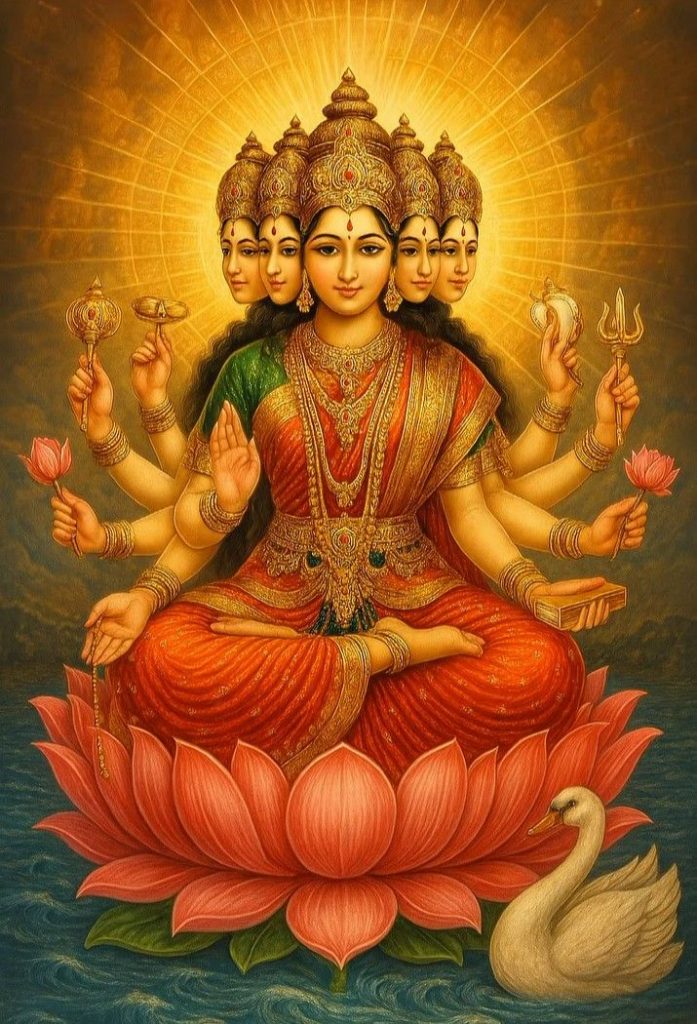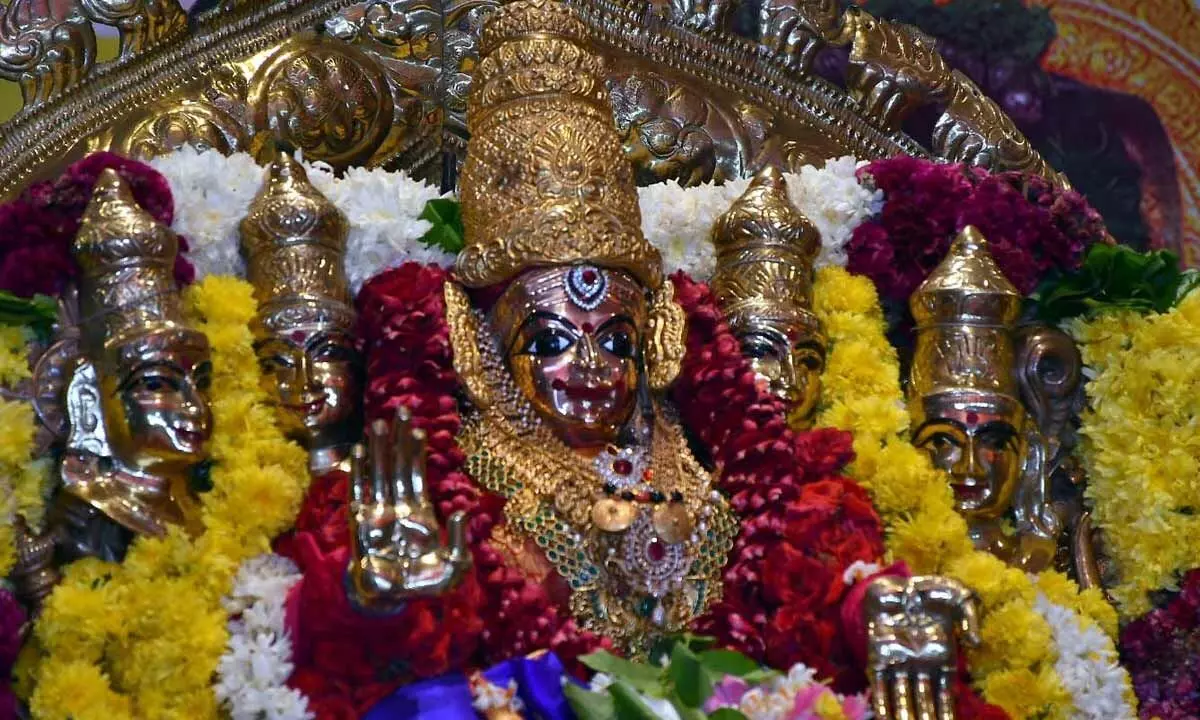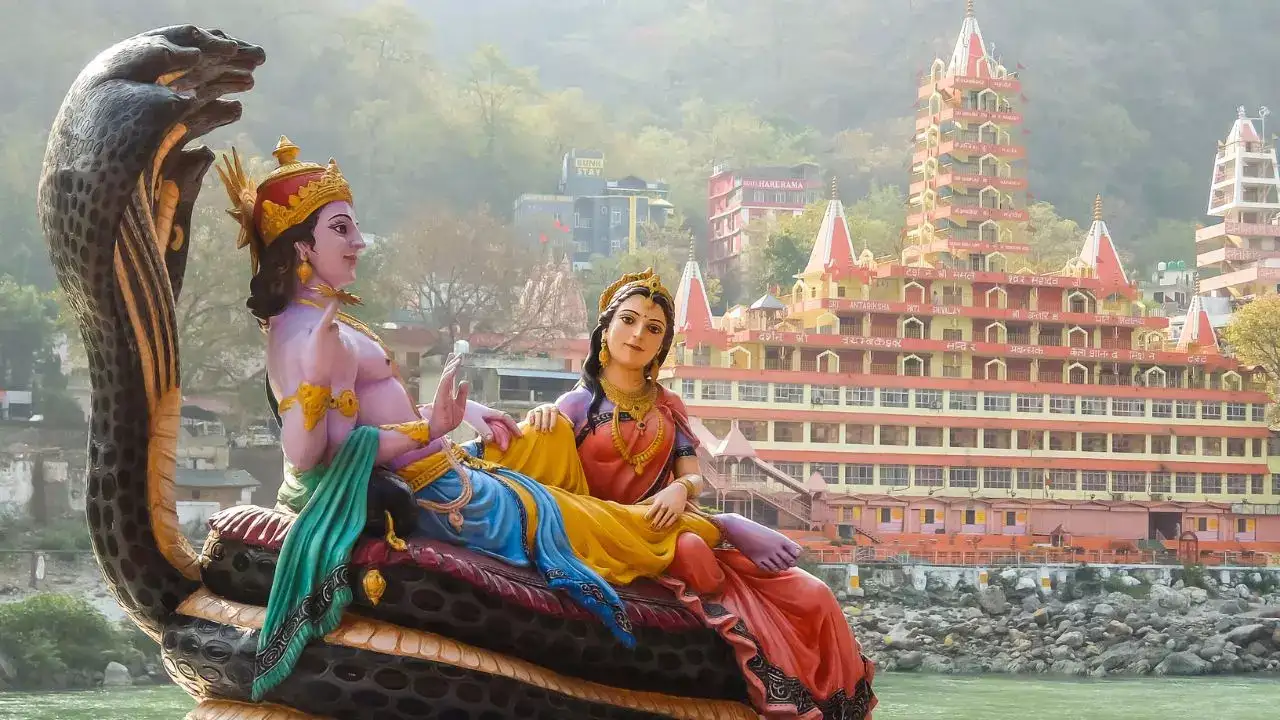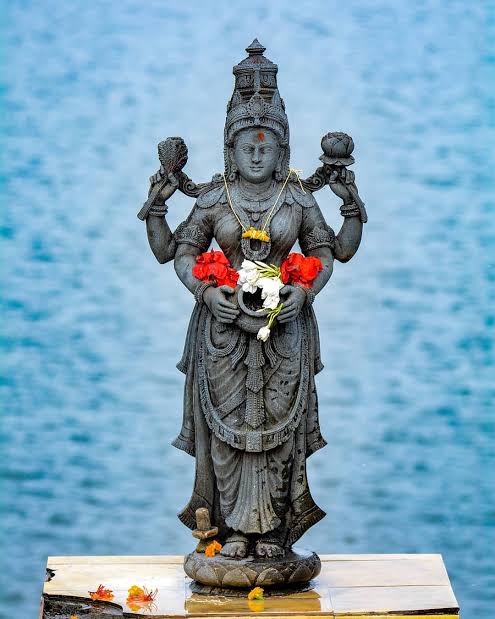Gayatri Jayanti marks the divine appearance of Maa Gayatri, the goddess of the Gayatri Mantra and the embodiment of Vedic wisdom. Celebrated on Shukla Paksha Ekadashi of Jyeshtha month, it is the spiritual birthday of the most sacred mantra in Hinduism.
Gayatri Jayanti

Gayatri Jayanti commemorates the incarnation of Goddess Gayatri, the Veda Mata (Mother of Vedas). It is believed that Maharshi Vishwamitra revealed the Gayatri Mantra on this auspicious day. The mantra, consisting of 24 syllables, is considered the essence of the Vedas, offering divine illumination and spiritual awakening.
Observed primarily by seekers, Brahmins, students, and spiritual aspirants, this festival is especially popular in North India and among followers of the Gayatri Parivar movement, initiated by Pandit Shriram Sharma Acharya.
Gayatri Jayanti is distinct from Vyas Purnima (Guru Purnima), although they sometimes coincide. While Vyas Purnima honors guru lineage, Gayatri Jayanti celebrates divine wisdom itself.
Deities Associated:
-
Maa Gayatri – Manifestation of Savitri, consort of Brahma, and personification of Gayatri Mantra.
-
Maharshi Vishwamitra – Revealer of the Gayatri Mantra.
-
Lord Brahma – Sometimes invoked as Gayatri is his Shakti.
-
Savita Devata – The solar deity invoked in the mantra.
🕉️ “Where Gayatri is chanted, there shines divine light – the mother of the Vedas is born in every breath.” 🕉️
Origin:
According to Vedic scriptures and Rigveda, the Gayatri Mantra was composed by Maharshi Vishwamitra to invoke the radiance of the Sun God (Savita) and awaken the higher intellect. It is mentioned in Rigveda (Mandala 3.62.10), making it one of the most ancient and foundational mantras.
Significance:
-
The Gayatri Mantra is considered the “Mahamantra” – the most powerful mantra.
-
It is the mother of all mantras and contains the spiritual power of all Vedic hymns.
-
Chanting the mantra daily ensures intellectual purity, spiritual enlightenment, and mental clarity.
Vedic Astrological Relevance:
-
Gayatri Jayanti falls during Jyeshtha Shukla Ekadashi, which aligns with sun-centric worship.
-
The Sun (Surya) is dominant during this period, and Gayatri – being a solar mantra – is most potent.
-
It is an auspicious time to initiate Upanayanam (sacred thread ceremony) and Brahmopadesham.
-
Ideal day for Surya Sadhana, mantra diksha, and initiation into spiritual disciplines.
Customs, Traditions, and Rituals:
Ritual Practices:
Devotees wake up during Brahma Muhurta and take a holy bath, preferably in rivers or sacred ponds. Panchopachara or Shodashopachara puja is done for Maa Gayatri. Gayatri Yagya is performed by offering ghee, herbs, and Samidha into the fire while chanting the mantra 108 or 1008 times. Brahmins perform Trikala Sandhya Vandana with Gayatri Japam.
Traditional Activities:
Children and youth are initiated into Gayatri chanting. Donations, especially of spiritual books and food, are encouraged. Collective group chants and prayer meetings are common in Gayatri Parivar centers. Women observe fast and recite Gayatri Chalisa and Gayatri Atharva Shirsha.
Puja Vidhi & Puja Katha
Puja Vidhi:
-
Wake up before sunrise and bathe.
-
Set up a Gayatri Devi murti or photo on a clean altar.
-
Offer turmeric, kumkum, flowers, tulsi, and akshata.
-
Light a ghee lamp and incense.
-
Chant the Gayatri Mantra 108 times (with japa mala).
-
Perform Homa or Yagya with offerings of samagri to Agni.
-
Offer Naivedyam like fruits, dry fruits, kheer, or soaked grains.
-
Conclude with Gayatri Aarti.
Gayatri Katha:
It is said that during a cosmic period of decline, Maharshi Vishwamitra undertook severe penance and tapped into divine vibrations. The Gayatri Mantra was revealed to him as a gift of divine sound to uplift humanity. It was then adopted in Vedic rituals, becoming a core part of Sandhyavandanam and Brahminical samskaras.
Celebrations Across India:
-
Haridwar & Rishikesh: Massive Gayatri Yagya and congregational japa in Shantikunj Ashram.
-
Ujjain: Mahayagyas conducted by Arya Samaj.
-
Maharashtra & Gujarat: Brahmin youth initiated into spiritual life.
-
South India: Observed by Smartha and Vaishnava Brahmins with Sandhyavandanam.
-
Online Celebrations: Global Gayatri Parivar networks conduct online japa sessions and digital havans.
Temples Where This Festival Is Prominent:
-
Gayatri Shaktipeeth, Haridwar (Shantikunj)
-
Gayatri Tapobhoomi, Mathura
-
Gayatri Mandir, Bhopal
-
Siddh Shaktipeeth Gayatri Mandir, Kurukshetra
-
Vedmata Gayatri Temple, Pune
How to Observe:
-
Maintain Brahmacharya for the day.
-
Chant Gayatri Mantra as much as possible (minimum 108 times).
-
Fast (optional) or eat only sattvic food.
-
Avoid negative speech, distractions, and indulgences.
-
Join collective prayers, zoom havans, or temple events.
Benefits of Celebrating:
✨ Spiritual:
-
Awakens inner consciousness and spiritual light.
-
Opens the Ajna chakra and enhances intuition.
-
Connects with higher realms through mantra shakti.
🧘♀️ Health:
-
Calms the nervous system.
-
Improves respiratory health via rhythmic chanting.
-
Reduces mental stress and anxiety.
🤝 Social:
-
Encourages community prayer and bonding.
-
Reinforces family traditions of Vedic learning.




